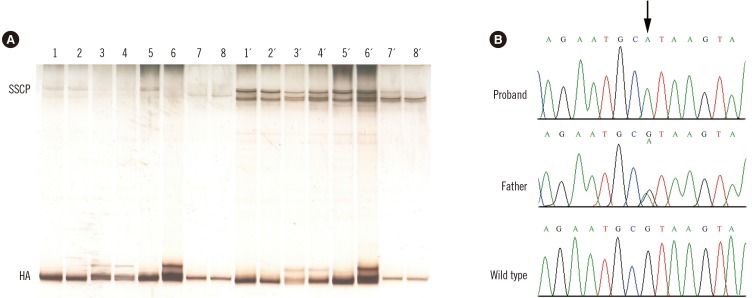Ann Lab Med.
2018 Mar;38(2):185-188. 10.3343/alm.2018.38.2.185.
Congenital Analbuminemia in Unrelated Algerian and Turkish Families is Caused by the Same Molecular Defect in the Albumin Gene
- Affiliations
-
- 1Laboratory on Pathophysiology of Uremia, Istituto Giannina Gaslini IRCCS, Genova, Italy.
- 2Blood Transfusion Center, Laboratory of Medical Virology, Mustapha Bacha University Hospital Center, Algiers, Algeria.
- 3Department of Pediatric Gastroenterology, Akdeniz University, Antalya, Turkey.
- 4Department of Molecular Medicine, University of Pavia, Pavia, Italy. loremin@unipv.it
- KMID: 2403369
- DOI: http://doi.org/10.3343/alm.2018.38.2.185
Abstract
- No abstract available.
MeSH Terms
Figure
Reference
-
1. Peters T Jr. All about albumin: biochemistry, genetics and medical Applications. San Diego, CA: Academic Press;1996. p. 1–432.2. Minchiotti L, Galliano M, Caridi G, Kragh-Hansen U, Peters T Jr. Congenital analbuminaemia: Molecular defects and biochemical and clinical aspects. Biochim Biophys Acta. 2013; 1830:5494–5502. PMID: 23612153.3. The Albumin Website. Updated on April 2016. http://www.albumin.org.4. Watkins S, Madison J, Galliano M, Minchiotti L, Putnam FW. A nucleotide insertion and frameshift cause analbuminemia in an Italian family. Proc Natl Acad Sci U S A. 1994; 91:2275–2279. PMID: 8134387.5. Toye JM, Lemire EG, Baerg KL. Perinatal and childhood morbidity and mortality in congenital analbuminemia. Paediatr Child Health. 2012; 17:20–23.6. Lyon AW, Meinert P, Bruce GA, Laxdal VA, Salkie ML. Influence of methodology on the detection and diagnosis of congenital analbuminemia. Clin Chem. 1998; 44:2365–2367. PMID: 9799768.7. Minghetti PP, Ruffner DE, Kuang WJ, Dennison OE, Hawkins JW, Beattie WG, et al. Molecular structure of the human albumin gene is revealed by nucleotide sequence within q11-22 of chromosome 4. J Biol Chem. 1986; 261:6747–6757. PMID: 3009475.8. Caridi G, Dagnino M, Di Duca M, Pinto H, Espinheira Mdo C, Guerra A, et al. A novel splicing mutation causes analbuminemia in a Portuguese boy. Mol Genet Metab. 2012; 105:479–483. PMID: 22227324.
- Full Text Links
- Actions
-
Cited
- CITED
-
- Close
- Share
- Similar articles
-
- Congenital Analbuminemia in a Korean Male Diagnosed with Single Nucleotide Polymorphism in the ALB Gene: The First Case Reported in Korea
- The Report for Genetic Analysis of Korean Families with Congenital Cataract
- Analysis of low - density - lipoprotein receptor gene in Korean patients with familial hypercholesterolemia
- The Molecular Genetic Study Using Automatic Sequence Analyzer on the Steroidogenic Acute Relulatory Protein(StAR) Gene
- Molecular characterization and Prenatal Molecular Evaluation of three fetuses in four unrelated Korean families with Lesch-Nyhan syndrome


